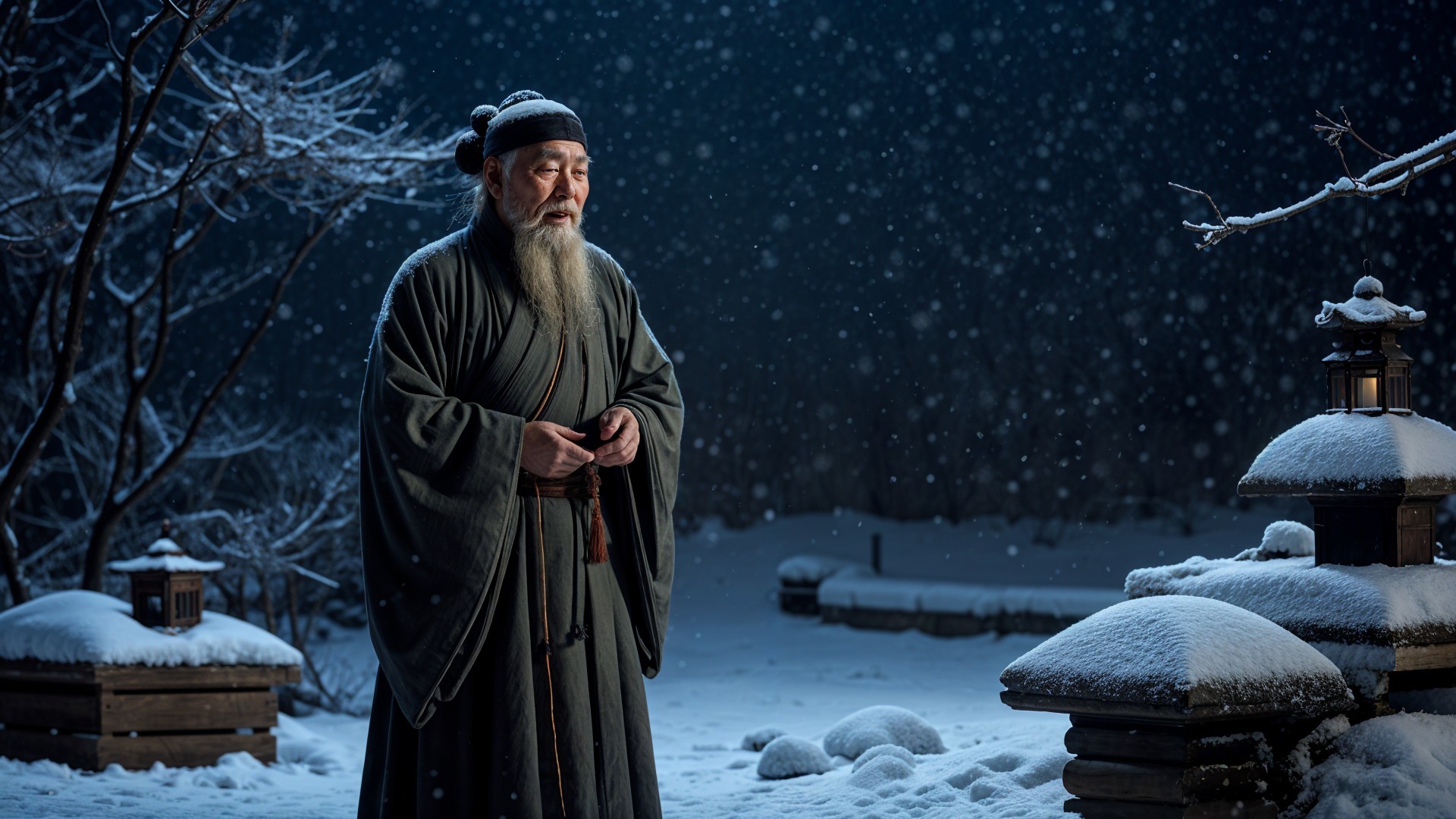Prompt:
A serene winter night during the Tang Dynasty, where the silence of nature is broken only by the melancholic song of insects. The scene, imbued with contemplation and ancestral wisdom, captures the solitude and poignant beauty of the moment.
Key scene: The old sage stands at the center of the frame, snow falling gently around him. With his eyes closed, he is completely absorbed by the insects' song. The winter landscape stretches as far as the eye can see, the soft glow of lanterns casting long shadows on the snow. The moon, cold and bright, symbolizes the passage of time.
The Young Couple: In the background, perhaps at the far end of the garden or barely visible through a window, a young couple in their twenties share a moment of carefree joy, unaware of the profound meaning of the insects' song. Their youthful laughter contrasts with the old man's gravity. Their presence contrasts with the introspection and wisdom of the old sage as he confronts the inevitability of aging.
The setting: A snow-covered garden in front of a traditional Tang-style scholar's house, with its pagoda roofs, exposed beams, and winding stone paths. The bare branches of the plum trees are dusted with snow, and lanterns hang gently from them, diffusing a warm, flickering light. In the distance, mountains rise beneath a silvery, moonlit sky.
The old man: An elderly scholar with a long, silky beard and snow-white hair, dressed in a traditional Tang robe. Alone, he stands near a wooden veranda, leaning lightly on a cane, his face serene yet tinged with gentle sadness. His gaze, both soft and intense, is absorbed by the song of insects carried on the cold wind. His posture is pensive, absorbed by the bittersweet sound that pierces the frost. The Insects: The song of the insects is visually represented by a luminous and ethereal swirl, delicate and fragile like winter itself. These insects—crickets, grasshoppers, or perhaps other creatures—are small, but their song fills the air, weaving a subtle, almost supernatural presence into the scene. Their presence is both discreet and profound, like an invisible force.
The Atmosphere: A calm and introspective atmosphere. The work should convey a sense of melancholy, wisdom, and the passage of time. The winter landscape is serene, yet heavy with the weight of memories. The coldness of the snow contrasts with the warmth of the scholar's robes and the dim glow of the lanterns.
Artistic Style: The work should give the impression of being captured in a moment of tranquility, as if frozen in time, through delicate lines and subtle shadows. The contrast between the delicate beauty of the insects' song and the harshness of the winter landscape should be emphasized. The composition should have a cinematic dimension, allowing the viewer to feel both the weight of history and the ephemeral beauty of the present moment.

 Artist
Artist